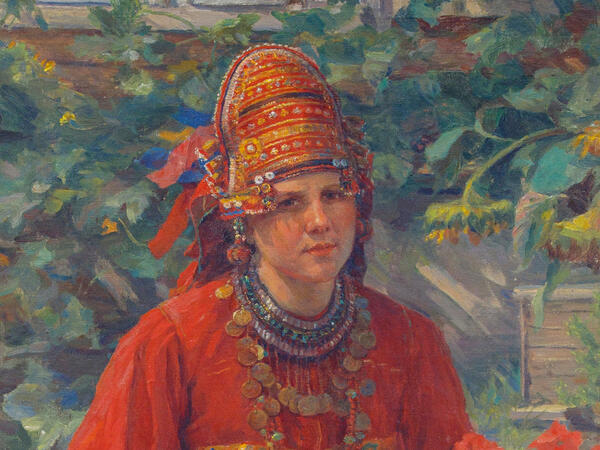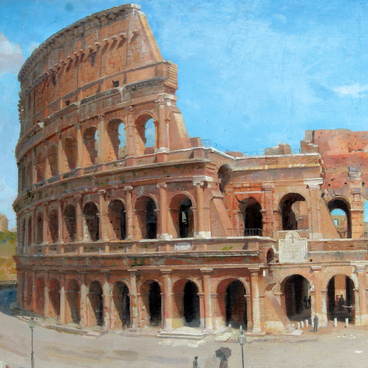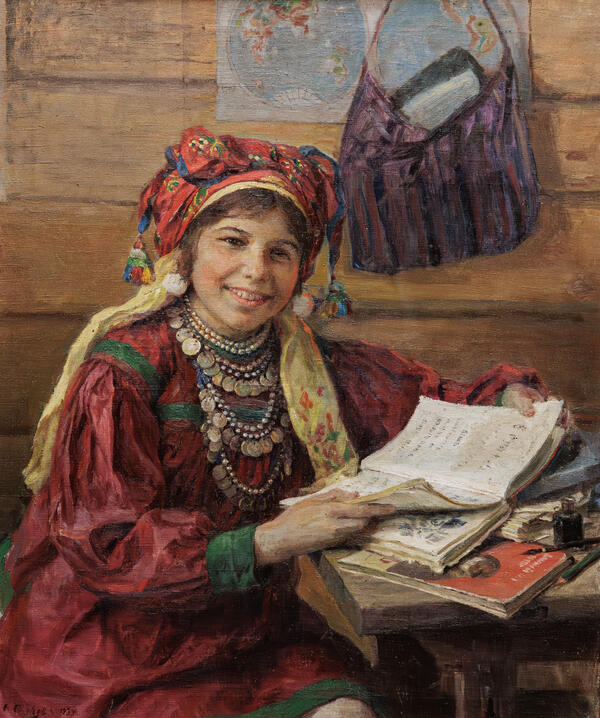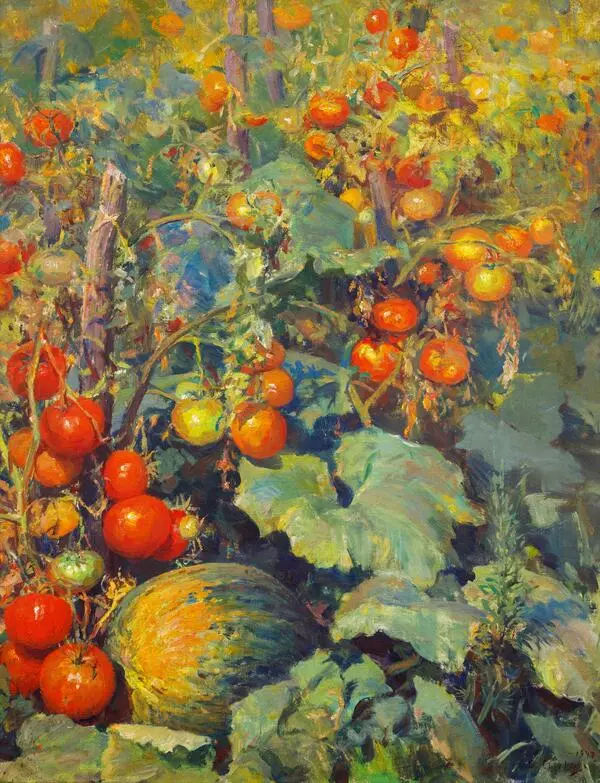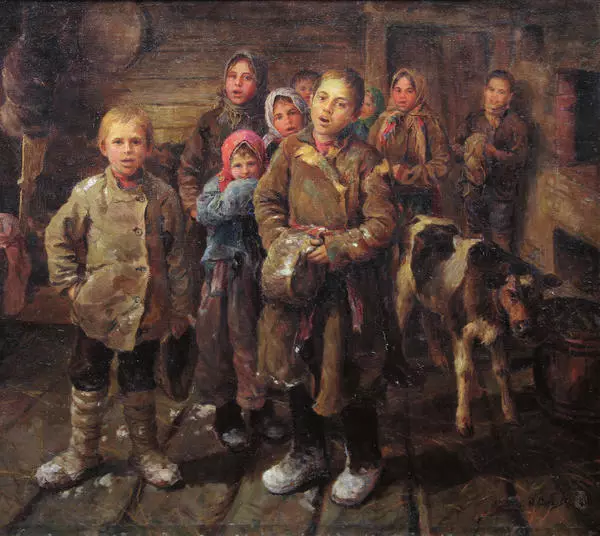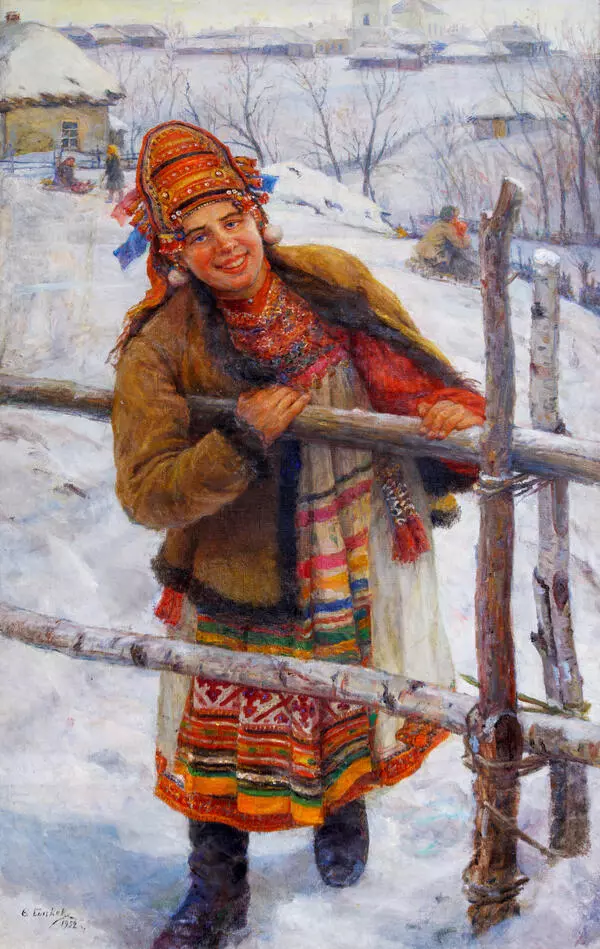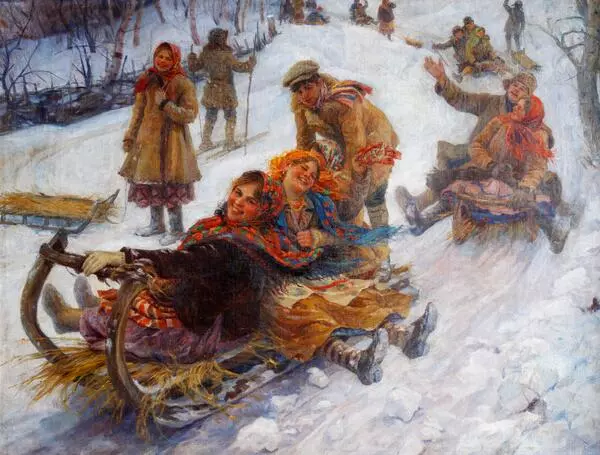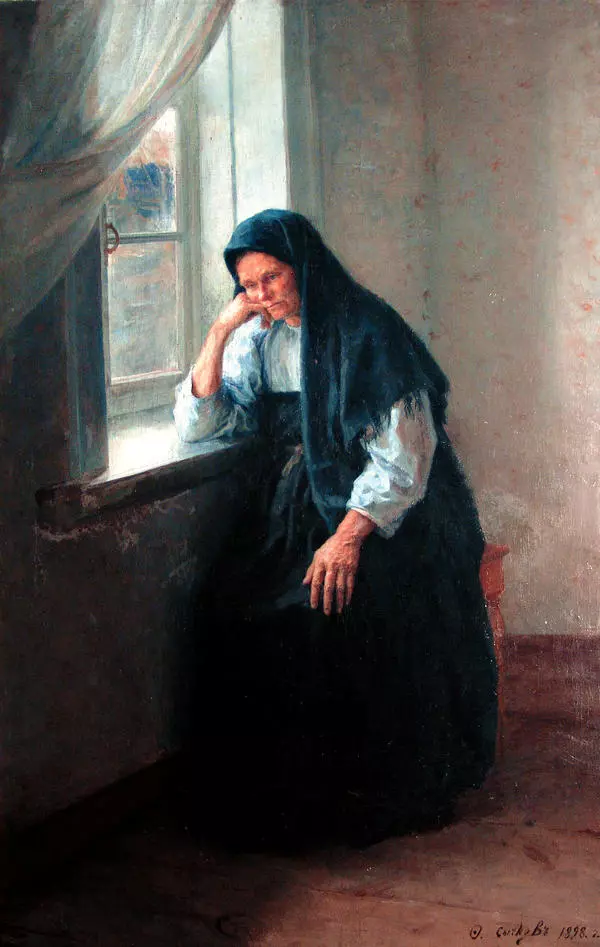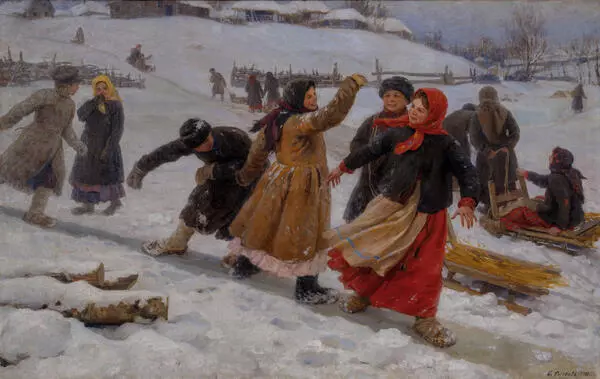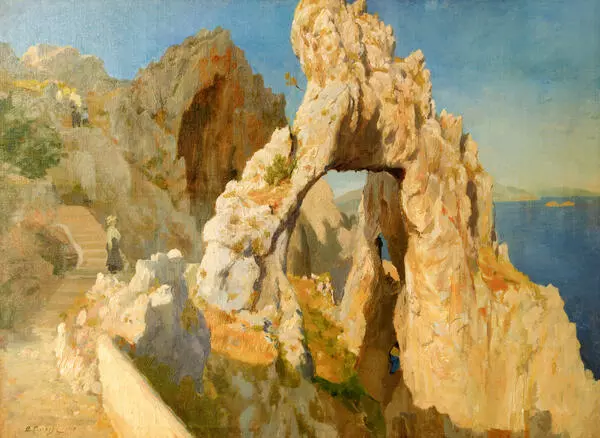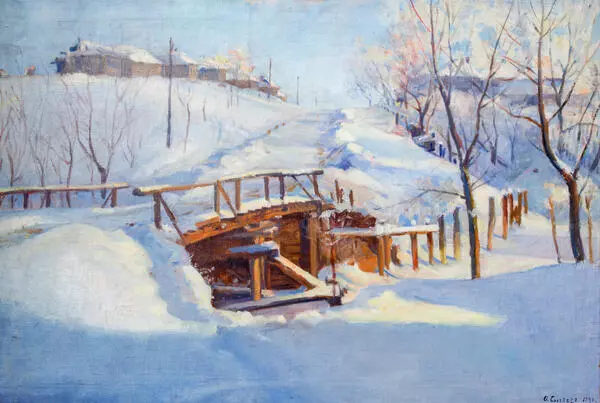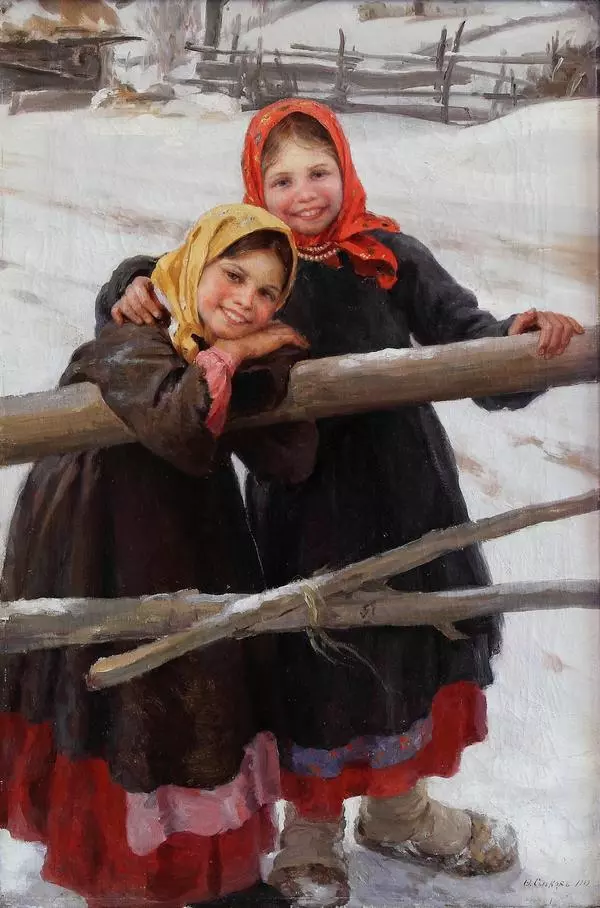In 1930, the Russian village of Kochelayevo, as well as other areas, became part of the Mordovian Autonomous Region. Prior, it belonged to the Narovchatsky district in Penza Governorate, and since the 1930s it belonged to the Kovylkinsky district of the Mordovian ASSR. These years became a starting point of a new period for Fedot Sychkov. Both in the life of the artist’s beloved village and on his canvases, appeared new characters: for instance, ‘Portrait of Mordovian Teacher’ in 1937 and ‘Mordovian Girls Working on Tractors’ in 1938. These themes connected the artist even closer with the culture of the young national republic.
Sofia Pavlovna Ryabova, a teacher at the Mordovian Pedagogical College, posed for the painting ‘Teacher-Mordvinian’. Together with her brothers Anatoly and Vladimir, she was part of a group of young national intellectuals. In those years, Sofia Pavlovna was married to Viktor Khrymov — a friend and student of Fedot Sychkov, the first chairman of the Artists Association of Mordovia.
In ‘Portrait of Mordovian Teacher’ Fedot Sychkov departed from his traditional style of portraying women with a constant wide smile. He depicted the teacher as a thoughtful and serious person. The strictness of her face contrasts somewhat unexpectedly with the bright festive color scheme of the portrait: the artist usually chose such colors for carefree, joyous characters. But in this artwork, the teacher’s look expresses a calm confidence and a deep satisfaction with her work: intelligent eyes look closely and intently, eyebrows slightly frowned, following the inner movement of thought. This contrast does not irritate the eye, as the artist painted in one tone: the delicate blush on the girl’s cheeks and the Mordovian costume with the dominant red color surprisingly harmonize with the bright, sunlit background.
The painter conveyed the features of her appearance and her inner world very truthfully. But this was not his main task. First of all, the artist created a portrait-type — an image of a typical person of the new time, a representative of the national intelligentsia. This semantic generalization, along with the contrasts and harmony of the painting, helped to extend the theme of the canvas: it goes beyond the image of a particular person and presents an entire new culture of Mordovia at a certain historical moment.
Sofia Pavlovna Ryabova, a teacher at the Mordovian Pedagogical College, posed for the painting ‘Teacher-Mordvinian’. Together with her brothers Anatoly and Vladimir, she was part of a group of young national intellectuals. In those years, Sofia Pavlovna was married to Viktor Khrymov — a friend and student of Fedot Sychkov, the first chairman of the Artists Association of Mordovia.
In ‘Portrait of Mordovian Teacher’ Fedot Sychkov departed from his traditional style of portraying women with a constant wide smile. He depicted the teacher as a thoughtful and serious person. The strictness of her face contrasts somewhat unexpectedly with the bright festive color scheme of the portrait: the artist usually chose such colors for carefree, joyous characters. But in this artwork, the teacher’s look expresses a calm confidence and a deep satisfaction with her work: intelligent eyes look closely and intently, eyebrows slightly frowned, following the inner movement of thought. This contrast does not irritate the eye, as the artist painted in one tone: the delicate blush on the girl’s cheeks and the Mordovian costume with the dominant red color surprisingly harmonize with the bright, sunlit background.
The painter conveyed the features of her appearance and her inner world very truthfully. But this was not his main task. First of all, the artist created a portrait-type — an image of a typical person of the new time, a representative of the national intelligentsia. This semantic generalization, along with the contrasts and harmony of the painting, helped to extend the theme of the canvas: it goes beyond the image of a particular person and presents an entire new culture of Mordovia at a certain historical moment.

